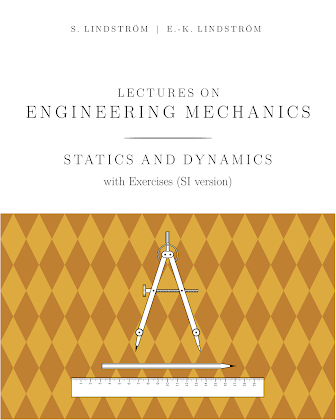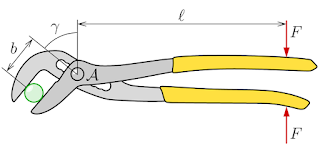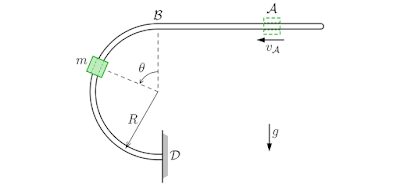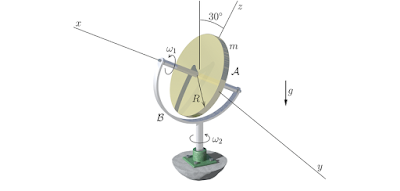Stefan Lindström's Blog
October 18, 2021
Uniquely rigorous textbook on Engineering with Exercises available
After months of work, my wife Eva-Karin and I finally finished the over 350 illustrated exercises for our book "Lectures on Engineering Mechanics: Statics and Dynamics with Exercises".
One textbook, just shy of 240 pages, covers statics, particle dynamics and rigid body dynamics. It presents the theory according to its proper structure of postulates, definitions and theorems. This is a unique feature at the Bachelor's level.
There is a preview of the SI version.
The textbook is available on Amazon for purchase:
Lectures on Engineering Mechanics: Statics and Dynamics with Exercises, SI version) https://www.amazon.com/gp/product/919... on Engineering Mechanics: Statics and Dynamics with Exercises, SI version) https://www.amazon.com/gp/product/919...
Published on October 18, 2021 11:22
August 17, 2019
Collection of problems coming in 2021
I am currently compiling a collection of problems together with Eva-Karin (spouse), including about 300 problems covering statics, particle dynamics and rigid body dynamics. The collection features similar high-quality 2D and 3D illustrations as Lectures on Engineering Mechanics.
The 2D images are created using xfig together with LaTeX, e.g.

 For three-dimensional problems the illustrations are created using the POVRay raytracer, and adding a vector graphics layer using xfig and LaTeX, e.g.
For three-dimensional problems the illustrations are created using the POVRay raytracer, and adding a vector graphics layer using xfig and LaTeX, e.g.

The 2D images are created using xfig together with LaTeX, e.g.

 For three-dimensional problems the illustrations are created using the POVRay raytracer, and adding a vector graphics layer using xfig and LaTeX, e.g.
For three-dimensional problems the illustrations are created using the POVRay raytracer, and adding a vector graphics layer using xfig and LaTeX, e.g.
Published on August 17, 2019 08:09
Collection of problems coming in 2020
I am currently compiling a collection of problems, including about 100 statics problems, 100 particle dynamics problems and 100 rigid body dynamics problems. The collection features similar high-quality 2D and 3D illustrations as Lectures on Engineering Mechanics.
The 2D images are created using xfig together with LaTeX, e.g.

 For three-dimensional problems the illustrations are created using the POVRay raytracer, and adding a vector graphics layer using xfig and LaTeX, e.g.
For three-dimensional problems the illustrations are created using the POVRay raytracer, and adding a vector graphics layer using xfig and LaTeX, e.g.

The 2D images are created using xfig together with LaTeX, e.g.

 For three-dimensional problems the illustrations are created using the POVRay raytracer, and adding a vector graphics layer using xfig and LaTeX, e.g.
For three-dimensional problems the illustrations are created using the POVRay raytracer, and adding a vector graphics layer using xfig and LaTeX, e.g.
Published on August 17, 2019 08:09
August 4, 2019
Simplicity through brevity, structure and rigour
The first time a student encounters a consistent physical modeling framework is in the basic Engineering Mechanics courses. From a small set of postulates, i.e. Newton's and Euler's laws, follows a theory capable of dealing with an enormous range of engineering problems. Thus, the learning objectives of Engineering Mechanics should not only be to develop problem-solving skills, but also to develop an understanding of the mathematical structure of the underlying theoretical frame. To achieve this goal, it is crucial to avoid verbose discussions and their inherent ambiguity, relying instead on a more formal presentation of postulates, definitions and theorems.
Published on August 04, 2019 06:06
July 29, 2019
Welcome
Dear readers,
Welcome to my blog on Engineering Mechanics as related to the textbook Lectures on Engineering Mechanics: Statics and Dynamics. I intend to comment on the various pedagogical considerations of individual Chapters of the book.
Welcome to my blog on Engineering Mechanics as related to the textbook Lectures on Engineering Mechanics: Statics and Dynamics. I intend to comment on the various pedagogical considerations of individual Chapters of the book.
Published on July 29, 2019 09:02



